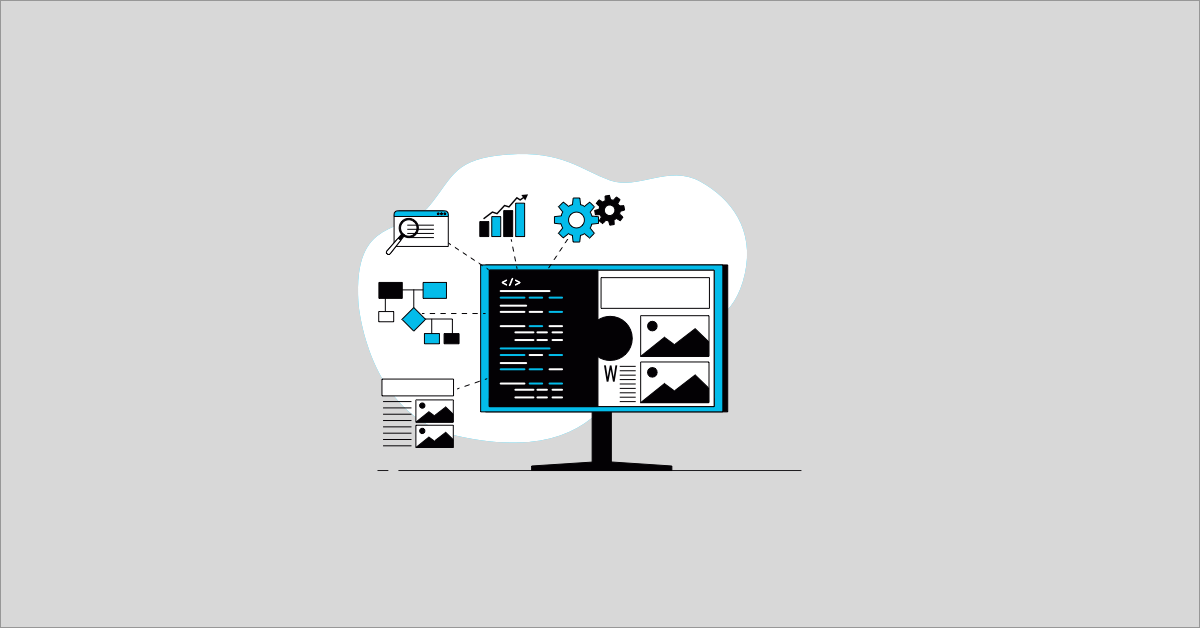Swift Onboarding: A Practical Guide for Software Teams
Author: The MuukTest Team
Published: June 17, 2025

Table of Contents
In software development, speed and quality are king. Quality Assurance as a Service (QAaaS) helps companies achieve both, but only if you can get up and running quickly. A swift onboarding process is key. At MuukTest, we understand this. We've designed our onboarding to be efficient and painless, so you can start seeing the benefits of automated testing right away. This post explains why swift onboarding is crucial for QAaaS success and how MuukTest delivers on that promise.
Nail the First Mile: Why Onboarding Matters
When a company decides to engage a QAaaS provider, they are often doing so to solve urgent problems: sluggish release cycles, escalating bug counts, or a lack of specialized testing expertise. Delays in getting the service up and running only prolong these pain points.
Here's why a swift and easy onboarding process is paramount:
- Immediate Time-to-Value: Customers invest in QAaaS to see tangible results quickly. A frictionless onboarding process means automated tests can start running sooner, bugs can be identified faster, and the benefits of accelerated releases can be realized without unnecessary waiting. Every day delayed is another day of missed opportunities or prolonged bottlenecks.
- Minimizing Disruption to Internal Teams: Your internal development and product teams are already busy. The last thing they need is a complex, time-consuming onboarding process for a new service. Easy onboarding ensures minimal distraction, allowing your teams to remain focused on their core responsibilities while the QAaaS provider seamlessly integrates.
- Building Trust and Confidence: The onboarding phase is the first real interaction with your QAaaS partner. A smooth, efficient, and well-communicated kickoff builds immediate trust and confidence in the provider's capabilities, reliability, and commitment to your success. It sets a positive tone for the entire partnership.
- Accelerating Problem Resolution: Companies turn to QAaaS when they're facing challenges. A rapid onboarding means the provider can get to work faster on automating critical regression suites, tackling backlog defects, or providing specialized testing for new features, leading to quicker resolution of existing pain points.
- Unlocking Agility: The very essence of modern software development is agility. A QAaaS provider that offers swift onboarding aligns with this philosophy, enabling your organization to adapt quickly to market demands and maintain a competitive edge.
Key Takeaways
- Fast onboarding is key for successful QAaaS: Swift onboarding minimizes disruptions to your team, builds trust with your QAaaS provider, and gets you to value faster.
- AI-powered automation streamlines setup: MuukTest's AI platform automates key onboarding tasks, drastically reducing setup time and effort so you can start testing quickly.
- Reach comprehensive test coverage in 90 days: MuukTest helps you achieve comprehensive test coverage within 90 days, enabling faster releases and a stronger foundation for quality.
The Importance of a First Impression
A smooth onboarding process is crucial for a positive relationship with your QAaaS provider. As discussed in Nail the First Mile: Why Onboarding Matters, "The onboarding phase is the first real interaction with your QAaaS partner." A smooth, efficient kickoff builds trust and confidence in the provider’s capabilities and commitment to your success. It sets the tone for the entire partnership. This initial experience significantly influences the long-term success of the collaboration, making effective onboarding a priority from day one.
Reduce User Abandonment with Quick Value Demonstration
User retention is critical in the competitive mobile app landscape. Research shows most new app users quit after their first use. In Q3 2022, only 23% of Android and 26% of iOS users returned to an app on day one. This highlights the importance of demonstrating value quickly to keep users engaged. A frictionless onboarding experience leads to better retention. Nail the First Mile: Why Onboarding Matters notes that "the app's onboarding process is crucial for keeping users." A smooth onboarding leads to better retention and sales. This same principle applies to adopting services like QAaaS. The faster your team experiences the value, the more likely they are to embrace the new process and contribute to its success.
How MuukTest Delivers Swift Onboarding
At MuukTest, we've designed our onboarding process to be as effortless and impactful as possible, ensuring our customers realize value from day one. Our approach combines the power of AI with dedicated human expertise to streamline every step:
- Minimal Customer Time Commitment: We understand your team's time is precious. After an initial demo and setup session, which lasts approximately two hours, our customers typically only need to commit about 15 minutes per week for quick check-ins. This drastically reduces the burden on your internal resources, allowing them to remain focused.
- AI-Powered Test Case Design and Automation: Our proprietary AI-powered platform plays a crucial role in accelerating the initial setup. Our AI agents can:
- Explore your software to design new, comprehensive test cases if you don't already have them.
- Quickly ingest and automate existing test cases you provide, transforming them into robust, executable scripts in Playwright, Selenium, or Appium. This significantly cuts down the time traditionally required for manual test case creation and scripting.
- Dedicated QA Experts as an Extension of Your Team: We pair our AI platform with a "human in the loop" – a dedicated MuukTest QA expert who acts as a seamless extension of your team. This expert handles the heavy lifting of implementation, works with your product specialists (like your QA Lead), takes inputs on new features, and quickly automates testing for those areas.
- Flexible Test Case Intake: Whether you have detailed test plans ready, or you prefer a more exploratory approach, we adapt. You can provide existing test cases, or let our AI and experts generate them based on your application's behavior.
- Seamless Integration with Your Ecosystem: Our team handles the integration of automated tests directly into your CI/CD pipelines and DevOps processes. This means once setup, tests run automatically with every code push, providing immediate feedback without manual intervention.
- Rapid Proof of Concept (PoC): We often begin with a quick PoC phase (e.g., 1-2 weeks) where we demonstrate the automation of your specific test cases in your environment. This allows you to see the efficiency and impact first-hand before a full commitment, building confidence early on.
- Goal-Oriented Approach: We start by defining clear goals, such as "achieve 80% test automation coverage by end of July." Our onboarding and subsequent work are entirely focused on efficiently driving towards these measurable objectives.
- Simple Access Requirements: To get started, we typically only need a URL and access to your QA environment. We prioritize security and efficiency in obtaining the necessary permissions.
Comprehensive Test Coverage in 90 Days
One of the biggest anxieties about software testing is the fear of missing critical bugs. We get it. Nobody wants to release software riddled with issues. At MuukTest, we aim to eliminate that fear by achieving comprehensive test coverage within 90 days. This aggressive timeline is possible thanks to our AI-powered approach and our dedicated QA experts. A frictionless onboarding process means automated tests can start running sooner, allowing us to identify bugs faster and get you on the path to accelerated releases. You can read more about the importance of onboarding on our blog.
This 90-day goal isn’t just about speed; it’s about building a solid foundation. We work closely with your team to understand your specific needs and priorities, ensuring that the tests we develop cover all the crucial aspects of your application. This thorough approach helps minimize risk and maximize the impact of your testing efforts.
Expert QA and CI/CD Integration for Seamless Onboarding
Seamless integration with your existing workflows is key for any successful QAaaS solution. We know that your development team doesn’t want to be bogged down with complicated new processes. That’s why at MuukTest, our team handles the integration of automated tests directly into your CI/CD pipelines and DevOps processes. This means tests run automatically with every code push, providing immediate feedback without manual intervention. Think of it as a silent guardian, constantly watching for regressions and ensuring the stability of your codebase.
Our dedicated QA experts act as an extension of your team, collaborating with your in-house specialists to ensure a smooth and efficient integration. They bring a wealth of experience, helping you optimize your testing strategy and maximize the value of your QA investment. Learn more about our customers and how we’ve helped other companies achieve their QA goals.
Scalable Solutions Tailored to Your Needs
We understand that every business is unique. A one-size-fits-all approach to QA simply doesn’t work. That’s why we offer scalable solutions tailored to your specific requirements. Whether you’re a small startup or a large enterprise, we can adapt our services to fit your needs and budget. We begin by defining clear, measurable goals—such as "achieve 80% test automation coverage by end of July"—and then focus our efforts on efficiently achieving those objectives. You can explore our pricing page to get a better understanding of how we can tailor a solution for you.
Our flexible approach also extends to test case intake. If you have detailed test plans, we can work with those. If you prefer a more exploratory approach, our AI and experts can generate test cases based on your application’s behavior. Ready to get started? Check out our QuickStart guide to learn how easy it is to onboard with MuukTest.
Release Faster with Confident Delivery
A swift and easy onboarding isn't just a convenience; it's the gateway to transforming your testing process. By minimizing initial friction, MuukTest ensures that your organization can quickly transition from delayed, manual-heavy validation to a streamlined, AI-powered automation engine. This allows your teams to focus on innovation, deliver higher-quality software faster, and achieve accelerated, confident releases consistently.
Choosing the Right Onboarding Style
Different apps call for different onboarding approaches. Selecting the right style is crucial for setting users up for success. Here are a few popular onboarding styles to consider:
Quickstart Onboarding
This minimalist approach lets users dive right in. It’s ideal for apps with intuitive interfaces where exploration is key. Think of a simple video editing app like InShot—users learn by doing, with minimal guidance. This style works best when the app's core functionality is easy to grasp.
Benefit-Focused Onboarding
Highlighting the app's key advantages upfront can be a powerful motivator. Apps like Calm excel at this, showcasing the benefits of meditation right from the start. This approach is particularly effective for apps in competitive markets where demonstrating value quickly is essential.
Progressive Onboarding
This style gradually introduces features as users explore the app. DuckDuckGo, for example, progressively reveals its privacy-focused features as users begin searching. Progressive onboarding is a great choice for apps with a wider range of functionalities, preventing users from feeling overwhelmed.
Best Practices for Effective Onboarding
Regardless of the onboarding style you choose, certain best practices can significantly enhance the user experience:
Early Push Notification Permission Requests
Prompting users for push notification permissions early on can be beneficial. It allows you to re-engage users and provide timely updates. However, ensure the request is contextual and explains the value of receiving notifications. A poorly timed or explained request can lead to immediate rejection.
Streamlined Login Options
Offering login options with Google or Apple simplifies the process and reduces friction for new users. This can significantly improve initial engagement and reduce abandonment rates during signup. Fewer steps mean a smoother entry into your app.
A/B Testing for Optimization
A/B testing different onboarding approaches is crucial for identifying what resonates best with your target audience. Experiment with different messaging, visuals, and flows to optimize conversion rates and user engagement. Analyzing the results helps you fine-tune your onboarding for maximum impact.
Progress Indicators for User Guidance
Using progress indicators during setup keeps users informed and engaged. Clearly showing how far they've come and how much is left can motivate them to complete the onboarding process. This is especially helpful for multi-step setups.
Avoid Information Overload
Presenting too much information at once can overwhelm users. Focus on the essential features and benefits initially, and provide opportunities for users to learn more at their own pace. Consider using tooltips or in-app help resources for more detailed information.
In-App Onboarding Design Tips
Effective in-app onboarding is a blend of clear communication and intuitive design. Here are some practical design tips:
Keep It Concise
Aim for the shortest onboarding experience that effectively introduces key features. Ideally, keep it under five screens to avoid overwhelming users. Respect your users' time and get them to the core value of your app quickly.
Gradual In-App Tutorials
Consider incorporating gradual in-app tutorials, similar to those found in video games. This approach allows users to learn by doing and provides contextually relevant guidance. This is more engaging than static tutorials.
Data-Driven Model for Onboarding Steps
Structuring your onboarding steps with a data-driven model, like an enum or array, provides flexibility and maintainability. This approach allows for easier modification and adaptation of the onboarding flow as your app evolves.
Dynamic View Rendering
Dynamically rendering views based on your data model allows for a more personalized and responsive onboarding experience. This approach can tailor the content and flow based on user behavior and preferences, creating a more customized feel.
View Model for Data and Flow Management
Using a view model to manage data and flow keeps your onboarding logic organized and maintainable. This separation of concerns simplifies development and testing, making future updates smoother.
Flexible View Structure
Designing a flexible view structure allows you to accommodate different view types and content formats. This adaptability is crucial for creating a dynamic and engaging onboarding experience that can adapt to different devices and screen sizes.
Domain-Specific Language (DSL) for Complex Flows
For complex onboarding flows with loops or conditional logic, consider using a Domain-Specific Language (DSL). This can simplify the implementation and management of intricate onboarding scenarios, making your code more readable and easier to maintain.
Measuring Onboarding Success
Tracking the right metrics is essential for understanding the effectiveness of your onboarding process. Focus on these key indicators:
Key Metrics to Track
The core metrics for measuring onboarding success are the conversion rates from install to trial and trial to paid. These metrics provide insights into user engagement and the effectiveness of your onboarding flow in driving conversions. They tell you what's working and what needs improvement.
Install-to-Trial Conversion Rate
This metric measures the percentage of users who start a free trial after installing the app. A higher install-to-trial conversion rate indicates that your onboarding is effectively encouraging users to explore the app's features. This is a good indicator of initial user interest.
Trial-to-Paid Conversion Rate
This metric tracks the percentage of trial users who convert to paid subscriptions. A strong trial-to-paid conversion rate demonstrates the value proposition of your app and the effectiveness of your onboarding in showcasing that value. This is the ultimate measure of onboarding effectiveness for subscription-based apps.
Related Articles
- Why Having Swift Onboarding is Key to QAAS Success
- Understanding Quality Assurance as a Service (QaaS)
- QA as a Service: The Ultimate Guide for 2024
- Practical Guide to Test Automation in QA
- Can Revenue Be Impacted Through QaaS Implementation?
Frequently Asked Questions
Why is onboarding so important for QAaaS?
Effective onboarding is crucial for QAaaS because it directly impacts how quickly you start seeing returns on your investment. A smooth onboarding means faster implementation, quicker identification of bugs, and a faster path to accelerated release cycles. It also sets the tone for a positive, productive relationship with your QAaaS provider.
How does MuukTest ensure a fast and efficient onboarding experience?
MuukTest uses a combination of AI-powered tools and dedicated QA experts to streamline the onboarding process. Our AI helps design and automate test cases rapidly, while our experts handle the implementation details and work closely with your team. We also prioritize minimal time commitment from your internal resources, typically requiring only about 15 minutes per week after the initial setup.
What if we don't have existing test cases?
That's not a problem. MuukTest's AI can analyze your software and create comprehensive test cases from scratch. Alternatively, our QA experts can work with you to develop new test cases based on your specific needs and requirements. We're flexible and can adapt to your existing processes.
How does MuukTest integrate with our current development workflow?
MuukTest seamlessly integrates with your CI/CD pipelines and DevOps processes. Our team handles the integration, ensuring that automated tests run automatically with every code push, providing continuous feedback without requiring manual intervention.
How long does it typically take to achieve comprehensive test coverage with MuukTest?
MuukTest aims to achieve comprehensive test coverage within 90 days. This rapid timeframe is made possible by our AI-driven approach, expert QA team, and streamlined onboarding process. This allows us to quickly identify and address critical bugs, accelerating your release cycles and improving software quality.
Related Posts:

Why Businesses Need Software QA Consulting Services to Grow
There are so many ways in which a software testing consultant can help streamline your processes. Whether you’re lacking in expertise, don’t have the time, or simply need a fresh perspective on what...

QaaS Explained: Your Guide to Quality as a Service
Delivering high-quality software is crucial in today's competitive market. But building an in-house QA team can be a drain on resources. QaaS (Quality as a Service) offers a smart solution. It gives...

Top Automation Testing Services: A Comprehensive Guide
Development teams are looking for ways to streamline their workflows, and automation testing is a game-changer in this area. Manual testing can be time-consuming and prone to errors, but automation...
%20(1).png?width=150&height=69&name=MuukTest-logo---light-background%20(3)%20(1).png)

